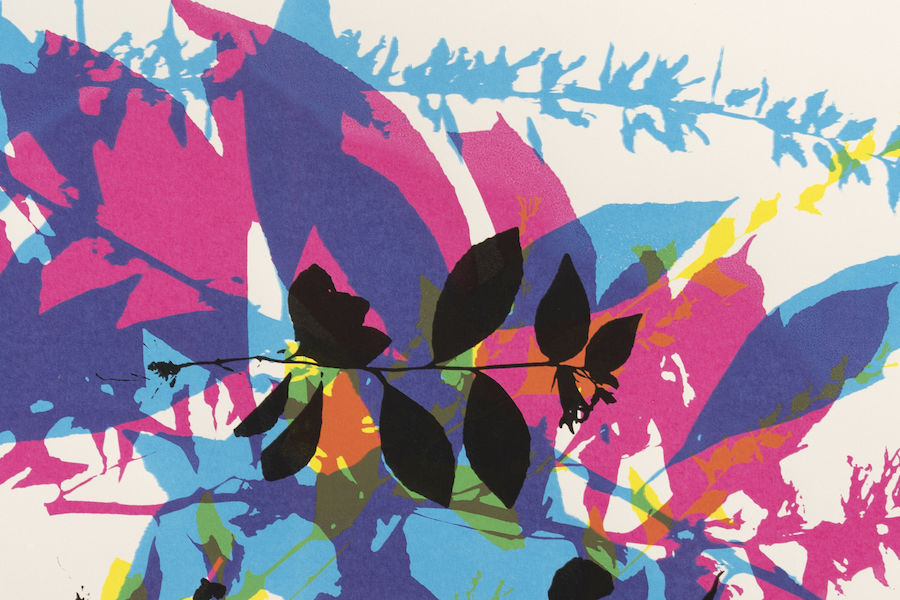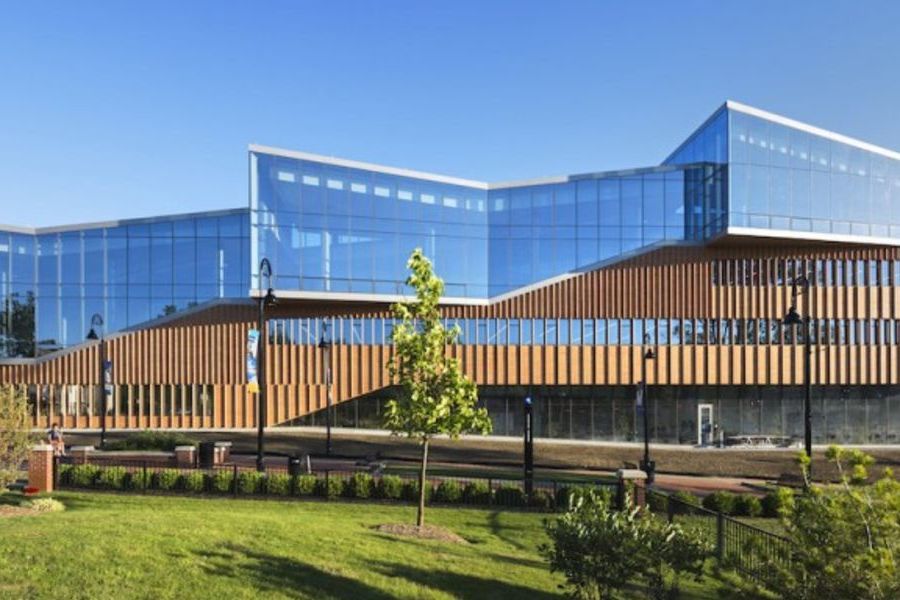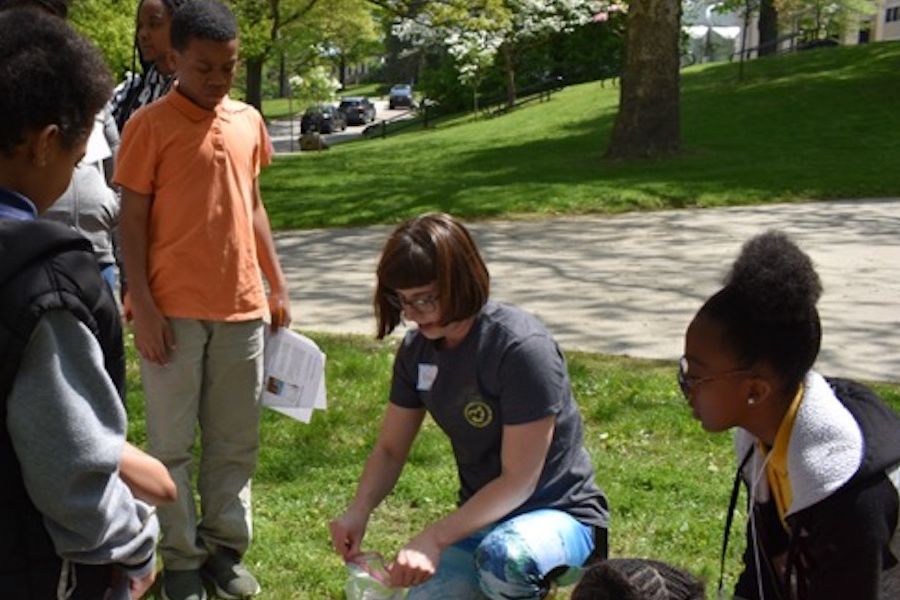The Environmental Science and Design Research Institute fosters innovative, interdisciplinary research at the intersection of natural, human and built systems. Our mission is to generate new knowledge, develop practical solutions and create transformative designs that address pressing environmental challenges—locally, regionally and globally.
We champion research and creative activities grounded in scientific methods and design thinking. ESDRI brings together students, faculty and community partners to explore the complex relationships among biological, social, cultural and economic systems. These dynamics shape the availability of essential resources, support biodiversity and influence human health and well-being.
Students: The institute aims to build research skills in students, in order to cultivate well-rounded, critical thinking professionals. ESDRI recognizes the professional and personal importance of students having foundational research or creative experiences, professional skills, and environmental knowledge, which is facilitated through a variety of workshops, speakers, forums, special events, socials, one-on-one guidance, and more. The institute supports undergraduates through its Fellowship Program, in hopes of mentoring a new generation of scholars. ESDRI supports graduate students through its Graduate Student Research Awards. All students are encouraged to share their work at the ESDRI Research Showcase each Spring.
View Current ESDRI Fellows
Faculty: ESDRI provides many opportunities for faculty to advance their research and facilitates multidisciplinary collaborations, procuring intramural and extramural funding, and working with qualified student researchers. The institute engages a broad range of talented scientists, designers, and practitioners, spanning many academic disciplines, fields, and programs. The institute proudly hosts an annual Sustainability Forum, with an ever-evolving theme, which draws from KSU faculty, students, and many of our community partners.
Academic units represented within ESDRI include:
- Aeronautics and Engineering
- Architecture and Environmental Design
- Art
- Biological Sciences
- Chemistry and Biochemistry
- Communication and Information
- Earth Sciences
- English
- Fashion
- Geography
- Peace and Conflict Studies
- Political Science
- Public Health
- Recreation, Park and Tourism Management
- Teaching, Learning and Curriculum Studies
View ESDRI-affiliated Faculty Members
By empowering environmental research, the institute aims to foster change by drawing from robust, well-informed science and design or extrapolating on the research ourselves. ESDRI encourages students, faculty, and the greater community to understand and leverage the interacting geological, biological, human, economical, cultural, and social systems around us. These overlapping systems impact and regulate the availability of resources (e.g. pure water, clean air, and food), sustain diversity of life on Earth, promote well-being, and affect all of us in our daily life.

The COVID-19 pandemic halted ÇŕÄęɬµĽş˝â€™s plans for the 2020 Environmental Science and Design Symposium, but it hasn’t impeded the spirit of the conference.

The words “biology” and “design” might not typically intertwine; however, ÇŕÄęɬµĽş˝â€™s Biodesign Challenge course was created to challenge the idea that the two separate disciplines could not collaborate.

Just like the research that goes into understanding and applying a complicated concept like biodesign, holding an entire symposium devoted to it is no small undertaking.

In early February, scientists reported the hottest temperature on record in Antarctica: 65 degrees Fahrenheit. Studies show climate change is disproportionately affecting the poles, warming them faster than anywhere else on Earth, and raising questions about what kinds of changes we can expect in arctic ecosystems as temperatures rise. 
A ÇŕÄęɬµĽş˝ biologist has teamed up with some colleagues in an inter-institutional effort to answer some of those questions.


Andrea Case sits at a table in ÇŕÄęɬµĽş˝â€™s Center for the Visual Arts, carefully contemplating the silhouettes of leaves printed in bold contrasting colors on the paper in front of her.

What is the role of BioDesign in addressing environmental issues we face locally and globally? What does it mean to "design with life?"

When cities need help imagining new possibilities for their urban places and communities, they call ÇŕÄęɬµĽş˝â€™s Cleveland Urban Design Collaborative (CUDC). Most recently, ÇŕÄęɬµĽş˝ architecture students had the opportunity to put the skills they learn in the classroom to make an impact on local communities in Erie, Pennsylvania.

ÇŕÄęɬµĽş˝â€™s Fashion School continuously finds ways to innovate. Its unique lifestyle boutique, Fashion School Store (FSStore), in downtown Kent recently added a new line called “Sustainability RETOLD.” This collection includes sustainably made clothing, featuring work from five different students and three faculty.

After years of remote sensing work, Joseph Ortiz, Ph.D., a professor in the Department of Geology in the College of Arts and Sciences at ÇŕÄęɬµĽş˝, and his research team recently shared their development of new cost-efficient methodologies that may lead to much safer drinking water for people in Ohio and other municipalities affected by harmful algal blooms (HAB).

Bridget Mulvey, Ph.D., associate professor of science education in the College of Education, Health and Human Services; and David Singer, Ph.D., associate professor in the Department of Geology in the College of Arts and Sciences, recently merged real geology research with community service in an effort to show some Akron Public Schools students that science is not just a benefit to their community but a viable career option, too.





